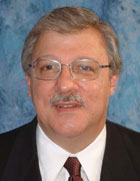
The People’s Republic of China has now authorized almost 1,000 additives for use in food packaging materials. The Hygienic Standard for Uses of Additives in Food Containers and Packaging Materials (GB 9685-2008) has now been completed with the adoption of a “positive list” of food packaging additives.
A long-running project
China began to update its additives list in 2005. The goal was to approve a large number of substances as food packaging additives based on several criteria, including their clearance status in the United States, the European Union and Japan. Industry submitted proposals to the Ministry of Health (MOH) for additives it wanted listed. MOH set up a Task Force, and published a draft list in early 2007. It was then notified to the World Trade Organization (WTO) in April 2008 for member countries to comment. The new list contains several changes from the 2007 published draft.
The new standard
The most recent announcement adds an Annex which includes a list of 959 additives approved for specified uses in food containers and packaging materials. The additives may be authorized for use without restriction, or may, as is the case for many, be listed with specifications pertaining to “Maximum Permitted Quantity (QM),” “Specific Migration Limit (SML)” and “Not Detectable (ND).” Any additive not on the list, or the use of which does not conform to that specified in the standard, is prohibited for use after June 1, 2009.
The Standard sets out several “principles” including the following:
• Migrating additives and impurities must not present any harm to the health of human beings.
• Migrating additives must not result in changes in food properties (such as ingredients, structure, color, smell or flavor).
• Use level of additives in food containers and packaging materials should not exceed that necessary to achieve the intended technical effect.
• Additives must comply with relevant quality specifications/standards.
Specific migration limits and other specifications will be determined by test methods to be designated by the MOH. However, methods which have been officially recognized by the U.S. or EU will be acceptable if China has no standardized test method.
For additives not included in GB 9685-2008, the MOH is expected to issue an administrative clearance procedure, along with data requirements, to enable the approval of new additives and polymers.
At the current time, the new list is only available in the Chinese language. Although many of the additives are listed with CAS Registry Numbers, understanding restrictions and specifications for use will require knowledge of the language.
George Misko, partner at respected law firm Keller & Heckman, has been a featured columnist with this publication since January 1994. Address comments or questions to him at 202-434-4100 or misko@khlaw.com.
